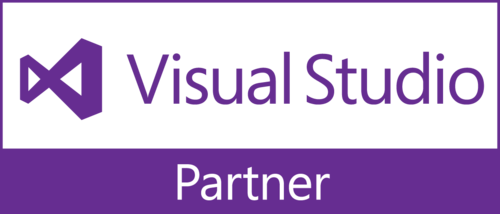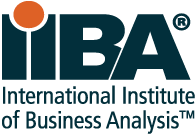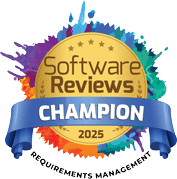What Is Business Analysis?

Table of Contents
Behind every functional system, efficient process, or successful product launch, there’s a structured approach to understanding what the business truly needs. This structured approach is known as business analysis. It helps teams evaluate objectives, set achievable expectations, and outline clear actions before any execution begins.
When business analysis is skipped, work often runs on guesswork. The result can be rising costs, wasted effort, delayed timelines, or even projects that never deliver the intended value.
Let’s understand what business analysis is, the step-by-step process for performing it, the techniques and frameworks used in business analysis, and how AI can transform the business analysis process.
What is Business Analysis?
Business analysis is a practical approach to understanding how a business works, identifying business needs, and finding solutions to solve problems. It also involves understanding business objectives and how to achieve them effectively.
Business analysts, who perform business analysis, use different techniques, including stakeholder review, survey, questionnaire, etc., to make informed decisions. Their main aim is to ensure time, money, and effort go toward things that truly matter and provide real value to business owners.
This discipline isn’t tied to just IT or software teams. It’s equally valuable in sectors like healthcare, manufacturing, finance, or aerospace, where decisions have a direct impact on systems, processes, or people.
Example: Let’s assume a logistics company is struggling with delayed deliveries. In this case, a business analyst analyzes delivery routes, warehouse handling, and customer feedback. Instead of guessing, they use facts to recommend changes like better routing software or updated shift plans.
The Business Analysis Process (Step-by-Step)
There is no standardized process to perform business analysis. Every business analyst follows different approaches.
However, IIBA has published the Business Analysis Body of Knowledge (BABOK) guide that provides the best practices for business analysis. It covers six knowledge areas, and each can be followed sequentially.
Below is a detailed look:
1. Business Analysis Planning and Monitoring
This is the preparation stage where the approach for the analysis is set. It includes:
- Identifying key stakeholders
- Choosing the appropriate technique to collect information
- Outlining timelines, deliverables, and communication plans
The goal is to ensure everyone understands how the analysis will be done.
2. Elicitation and Collaboration
- Interviews and discussions with stakeholders
- Workshops, surveys, or observation sessions
- Reviewing existing documentation, reports, or data
This kind of active collaboration can help business analysts avoid missing critical requirements.
Check out the guide on requirements gathering techniques to learn more.
3. Requirements Life Cycle Management
Once requirements are elicited, it is very important that requirements stay accurate and appropriately documented from start to finish. According to Statista, 48% of projects fail due to poorly documented requirements. So, this step can’t be ignored!
This step ensures:
- Requirements are documented, updated, and tracked
- Approved changes are recorded and communicated
- Stakeholders are kept aligned as the project evolves
This is a continuous process.
4. Strategy Analysis
Before implementing the solution, it is necessary to understand the business objectives and problems they are facing. This step involves:
- Understanding the current state of the business or process
- Identify problems and opportunities
- Define the desired future state and potential risks
With this context, a solid solution can be developed to achieve business objectives.
5. Requirements Analysis and Design Definition
The next step is to analyze requirements, and it includes:
- Breaking down vague requirements into well-structured requirements.
- Prioritizing requirements
- Exploring possible solutions
6. Solution Evaluation
After implementation or during pilot runs, the solution is checked against objectives. It includes:
- Assessing performance metrics
- Identifying gaps or improvements required in key business areas
- Recommending adjustments or enhancements
While these steps are written according to the BABOK guide, business analysts have the freedom to use their approach. Sometimes, they might need to perform multiple steps together.
Also read: 5 AI Tools for Business Analysts for Better Requirements Management
Business Analysis Frameworks and Techniques Every Analyst Should Know
Common Frameworks for Business Analysis
Business analysis frameworks give the structure to the analysis process and decision-making. Here, we have covered a few common frameworks:
- SWOT: It analyzes the requirements for strengths, weaknesses, opportunities, and threats.
- PESTLE: It is used to analyze requirements against various external factors, including political, economic, social, technological, legal, and environmental factors.
- MoSCoW: By using this framework, requirements can be grouped into “must have,” “should have,” “could have,” and “won’t have.”
- 6C’s Method: It helps business analysts to check clarity, conciseness, completeness, correctness, consistency, and concreteness of requirements.
- PABLO: Prioritizes features by performance, agility, business value, low risk, and overall impact.
- INVEST: It ensures user stories are independent, negotiable, valuable, estimable, small, and testable.
Frequently Used Techniques
Below are the common techniques that business analysts use for requirements elicitation.
- Interviewing stakeholders: Communicating with stakeholders to gather information.
- Brainstorming & workshops: Brainstorming sessions and workshops help to engage with team members for efficient requirement discovery.
- Process Modelling & User Stories: Maps workflows and defines user needs.
- Document analysis: Collecting details from different documents, including user manuals, SOPs, compliance documents, etc.
Business Analysis vs Business Analytics: Key Differences Explained
| Point of Difference | Business Analysis | Business Analytics |
|---|---|---|
| Main Objective | Looks at what the business needs and defines the right solution. | Examines data to find trends, measure performance, and guide decisions. |
| Working Style | Works with processes, requirements, and feedback from people. | Works with numbers, reports, and statistical models. |
| End Result | Action plans, clear requirements, and improved processes. | Dashboards, reports, and data-driven predictions. |
| Skills Used | Communication, process understanding, and requirement documentation. | Data analysis, visualization, and statistical techniques. |
| Typical Tools | Jira, Confluence, Lucidchart, Azure DevOps. | Excel, Power BI, Tableau, SQL, Python. |
| Example | Outlining steps for a new claims management system in an insurance company. | Using past claims data to predict high-risk categories. |
How Copilot4DevOps Transforms the Work of Business Analysts?
Business analysts spend a large part of their time gathering requirements, analyzing requirements, preparing functional/non-functional requirements documents, and executing similar kinds of repetitive tasks. This takes a slowdown in delivery, but what if they could be automated using AI?
Copilot4DevOps, an AI tool for business Analysts, which works directly within Azure DevOps, brings automation to this routine work. It helps analysts extract structured requirements from documents, meeting notes, support tickets, etc., using AI. The main benefit is that it can generate different kinds of work items, such as epics, features, user stories, test cases, etc., and directly embed them within the Azure backlog.
Furthermore, by using Copilot4DevOps, business analysts can quickly analyze each requirement against popular frameworks like SWOT, INVEST, PABLO, MoSCoW, etc.
The SOP/document generator feature can create different types of documents directly from an Azure work item. So, business analysts don’t need to write a document from scratch.
Similarly, the Impact Assessment feature analyzes the impact of a particular change on different work items using an AI.
By reducing repetitive effort, Copilot4DevOps allows business analysts to spend more time on analysis, stakeholder discussions, and improving solution quality.
Frequently Asked Questions (FAQs)
1. Can you explain how AI helps business analysts with requirements management?
AI in requirements management can help with requirements elicitation, generate flowchart diagrams, analyze requirements, write documents, or perform impact assessment.
2. What is the career path for a business analyst?
A business analyst can move into senior roles such as Lead Business Analyst, Product Owner, or Business Architect. Some transition into project management, product management, or strategy roles.
3. Are analytical skills important for business analysts?
Yes, analytics skills help business analysts clearly understand problems, develop strategies to solve problems, and make informed decisions.










